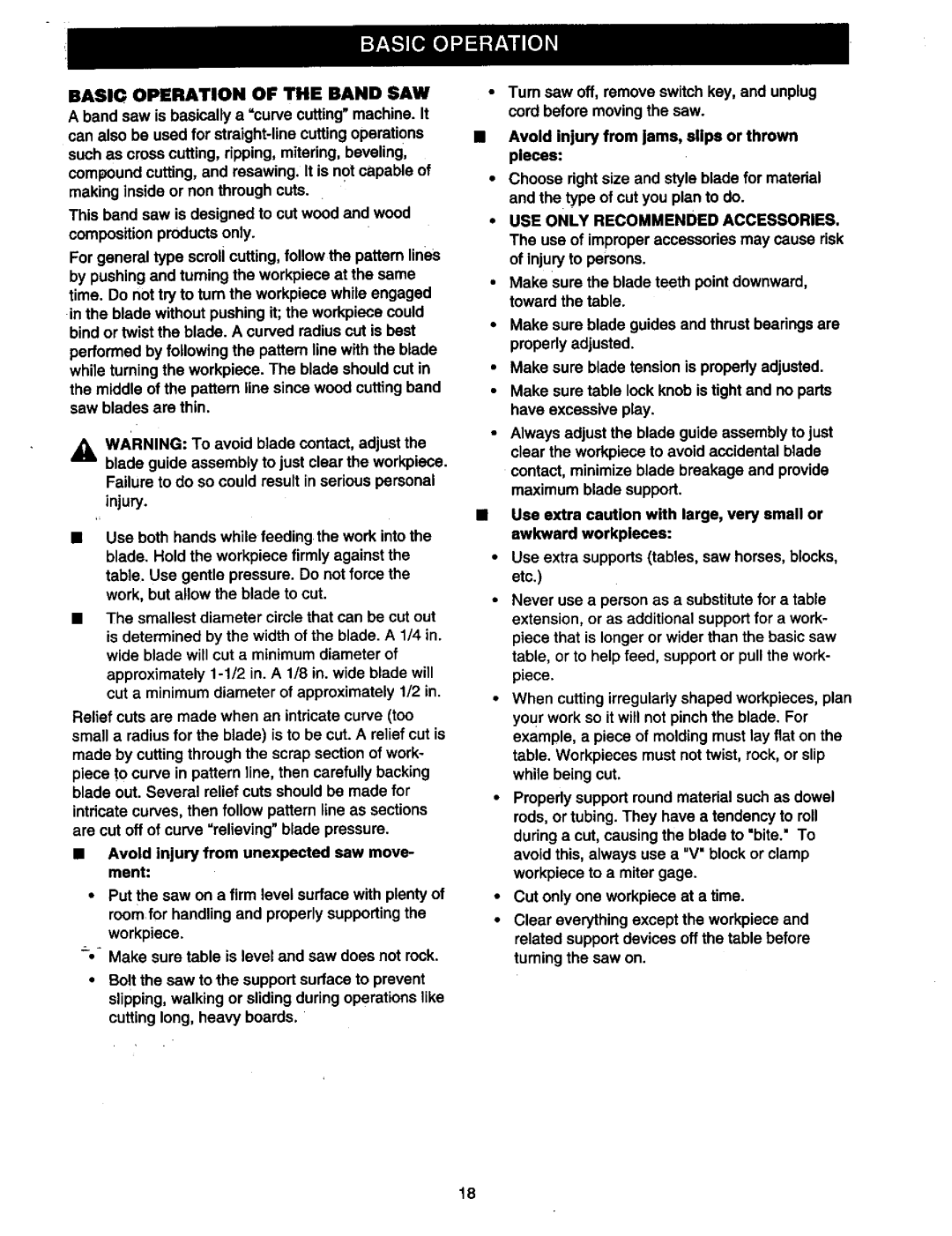
BASIC OPERATION OF THE BAND SAW A band saw is basically a "curve cutting" machine. It can also be used for
This band saw is designed to cut wood and wood composition products only.
For general type scroll cutting, follow the pattem lines by pushing and tuming the workpiece at the same time. Do not try to tum the workpiece while engaged in the blade without pushing it; the workpieca could bind or twist the blade. A curved radius cut is best performed by following the pattern line with the blade while turning the workpiece. The blade should cut in the middle of the pattam line since wood cutting band saw blades are thin.
_i, WARNING: To avoid blade contact, adjust the blade guide assembly to just clear the workpiece.
Failureto do so couldresultin seriouspersonal injury.
MUse both hands while feeding the work into the blade. Hold the workpiece firmly against the table. Use gentle pressure. Do not force the work, but allow the blade to cut.
The smallest diameter circle that can be cut out is determined by the width of the blade. A 1/4 in. wide blade will cut a minimum diameter of
approximately
Relief cuts are made when an intricate curve (too small a radius for the blade) is to be cut. A relief cut is made by cutting through the scrap section of work- piece to curve in pattern line, then carefully backing blade out. Several relief cuts should be made for intricate curves, then follow pattern line as sections are cut off of curve =relieving" blade pressure.
•Avoid injury from unexpected saw move- ment:
•Put the saw on a firm level surface with plenty of room for handling and properly supporting the workpiece.
%Make sure table is level and saw does not rock.
•Bolt the saw tothe support surface to prevent slipping, walking or eliding during operations like cutting long, heavy boards.
Turn saw off, remove switch key, and unplug cord before moving the saw.
Avoid injury from jams, slips or thrown pieces:
•Choose right size and style blade for material and the type of cut you plan to do.
•USE ONLY RECOMMENDED ACCESSORIES, The use of improper accessories may cause risk of injury to persons.
•Make sure the blade teeth point downward, toward the table.
•Make sure blade guides and thrust bearings are properly adjusted.
•Make sure blade tension is properly adjusted.
•Make sure table lock knob is tight and no parts have excessive play.
•Always adjust the blade guide assembly to just clear the workpiece to avoid accidental blade contact, minimize blade breakage and provide maximum blade support.
Use extra caution with large, very small or awkward workpleces:
Use extra supports (tables, saw horses, blocks, etc.)
Never use a person as a substitute for a table extension, or as additional support for a work- piece that is longer or wider than the basic saw table, or to help feed, support or pull the work- piece.
When cutting irregularly shaped workpieces, plan YoUr work so it wil! not pinch the blade. For example, a piece of molding must lay flat on the table. Workpieces must not twist, rock, or slip while being cut.
Properly support round material such as dowel rods, or tubing. They have a tendency to roll during a cut, causing the blade to "bite." To avoid this, always use a "V" block or clamp workpiece to a miter gage.
Cut only one workpiece at a time.
Clear everything except the workpiece and related support devices off the table before turning the saw on.
18
